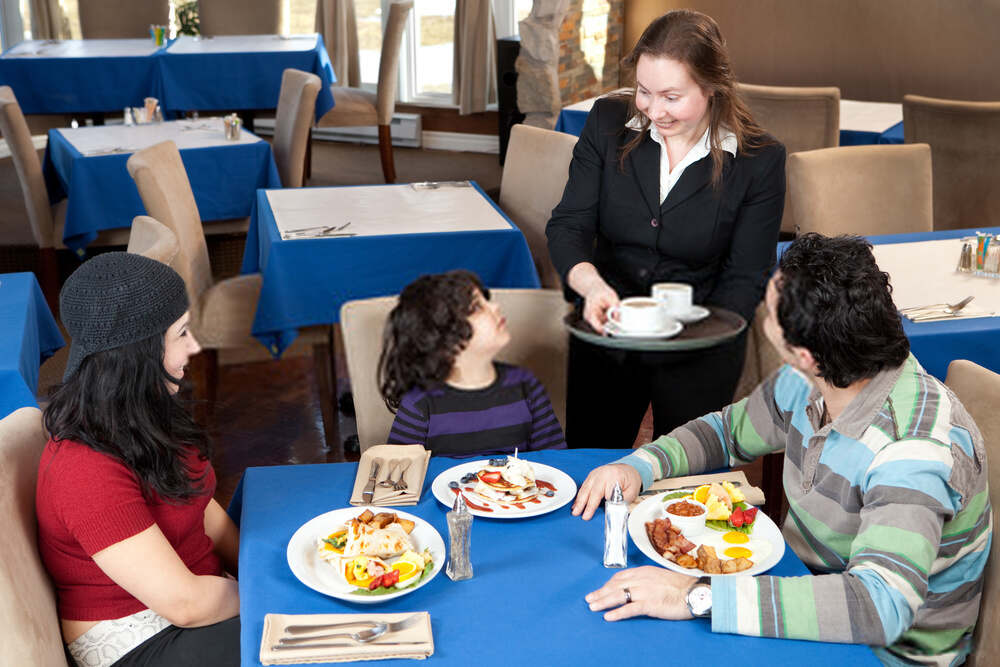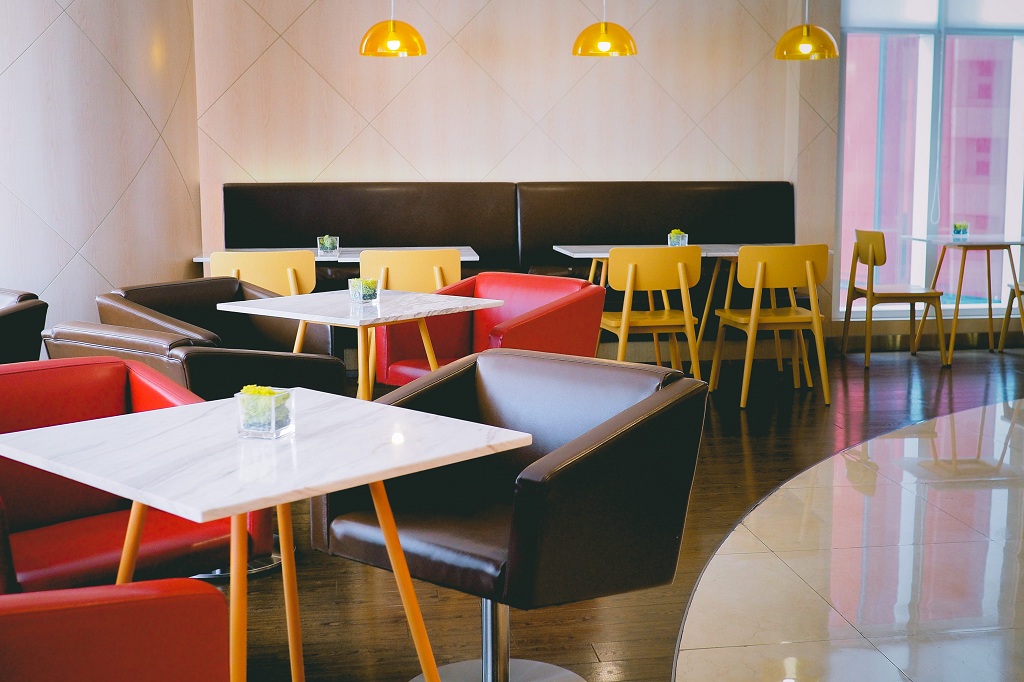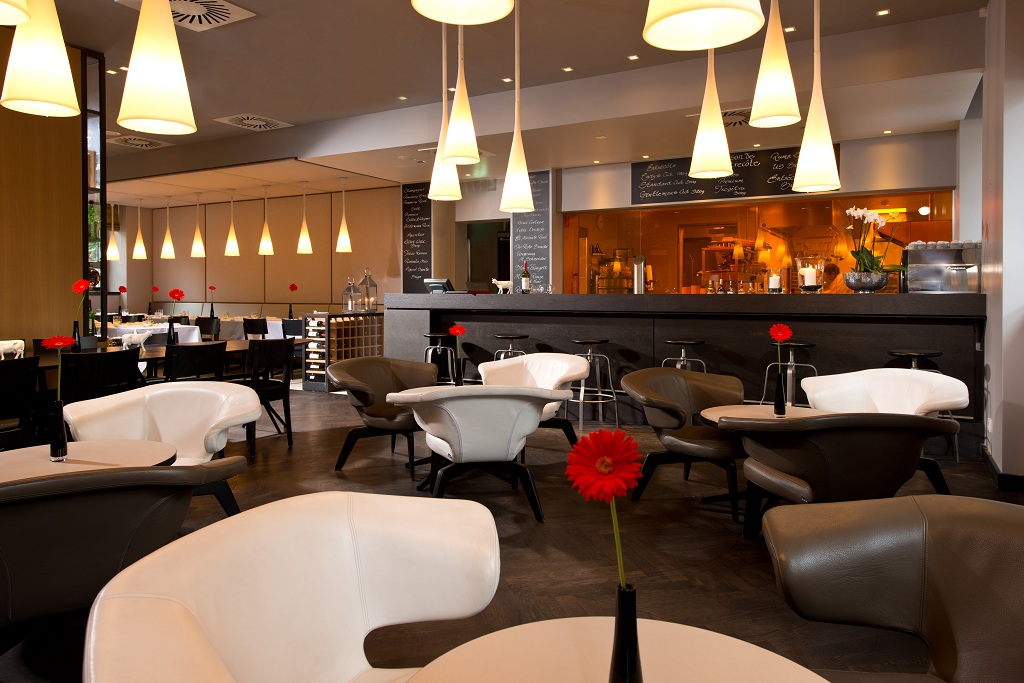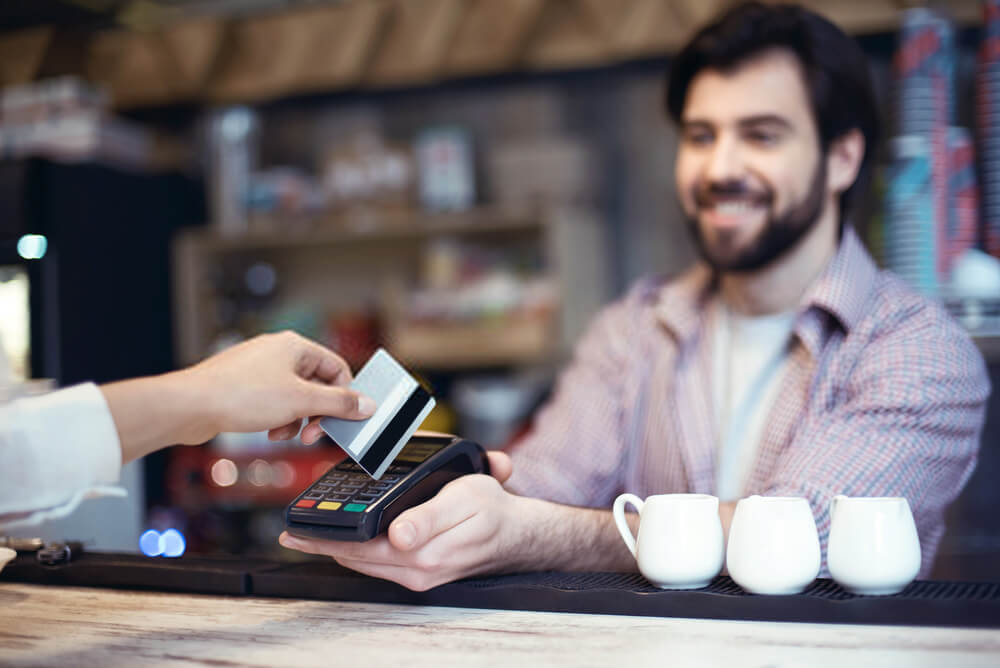As a restaurant owner, you thrive to achieve the perfect balance of providing a satisfying dining experience to your guests, making a happy workplace for your staff, and maximizing your revenue & profits. Making the most of available resources requires you to ensure that your restaurant serves as many guests as possible. In the hospitality industry, table turnover refers to the effective utilization of the tables in a restaurant. Although you want to accommodate as many guests per meal service as you can, you don’t want your guests to feel unwanted or unappreciated.
11 Ways/Tips to Improve or Increase Restaurant Table Turnover
The restaurant table turnover rate is a tough nut to crack. Now that you are aware of the importance of table turnover in a restaurant business; here are some of the ways to increase table turnover.
1. Train servers to Greet the Tables Immediately
As soon as your guests arrive at your restaurant, your servers must greet them and offer a table. After all, no customer would want to wait at the reception desk, especially when there are open tables in front of them. As a rule of thumb, you should train waiters to greet the customers and get the drinks order within 5 minutes of being seated. Similarly, a server should get the food orders within ten minutes of ordering the drinks.

By immediately attending to your customers, you can save some valuable time at each table. Moreover, since your guests might indulge in chatting before ordering, a subtle push from your server will increase the table turnover.
2. Have an Organized Seating System
An organized and efficient restaurant seating system requires perfect communication between your hosts and servers. For example, when guests leave and the busier cleans a particular table, the server can signal the host in advance to signal an opening at the table shortly.

This way, the host has sufficient time to fetch the next guests in the queue to get them seated immediately. Similarly, having a dedicated waiting area in your restaurant makes it easy for hosts to find customers.
3. Take the Wait Away and Provide Quick Services
In any restaurant, a customer spends significant time waiting. Waiting for the table, waiting to order, waiting to get the dishes, waiting to get the check, waiting for paying the bill, and so on, the list is endless. All these instances pose a challenge to the restaurant staff and room for improvement.
You can increase the table turnout in your restaurant by embracing technology and cutting down wait times. For example, POS devices at the restaurant tables send the order straight to the kitchen. This information helps your kitchen staff in understanding your requirements to deliver the dishes quickly.
4. Don’t Explain the Menu to Repeat Customers
The concept of the restaurant menu is to make your guests aware of the best dishes and try to up-sell the specialties. However, if a particular customer has been to your restaurant before, he has already seen the menu, and retelling the menu is not necessary. Moreover, the entire process of repeating the menu might be annoying to your guests as well.

A simple way is to train your staff to ask if the customers have visited your restaurant before. This way, you can save precious time by straight away going for the order.
5. Test Out the New and Latest Technology
Investing in technology not only expedites different processes, but it also gives better returns in no time. For example, a mobile app and self-serving kiosks can be a time-saving approach for takeout orders. Similarly, you can introduce table side tablets for quick ordering.
6. Don’t Accept Reservation on Busy Time
If your restaurant gets busy in the evening or during weekends, it’s best to hold the reservations. By reserving tables during rush-hours, you are wasting resources as well as revenue. So rather than keeping tables for customers who might not even show up in time, it makes sense to keep your restaurant walk-in during peak hours. This way, you can increase the restaurant table turnover.
7. Update Your Dining Room
If you are struggling with slow turnover rates, you can consider changing your restaurant layout and interiors. For example, moving the restaurant chairs and tables in the central area of the dining area encourages your guests to finish their meals quickly. Since the central part of the dining area is buzzing with activity and often the busiest, it instills a sense of urgency in your customers. Similarly, the choice of your restaurant furniture can also be responsible for slowing down the table turnover. While anchored booths or corner tables make the customers linger for longer times, movable & foldable tables and chairs in fast food restaurants make customers finish their food quickly.

Apart from restaurant layout and furniture, its ambiance can also impact the table turnover rates. For example, exciting bright colors like red, orange, yellow, etc. encourage your guests to eat quickly. Similarly, bold upholstery, bright dinnerware, vibrant art-works, etc. result in quicker turnover rates.
8. Assign Multiple Servers to Large Tables
Customers in a big group can be a lot of work for a single server. Managing such a big group often results in poor customer experience and slow service. You can eliminate this issue by assigning multiple servers for such groups. Distributing workload makes the servers attend customers better, respond quickly to their demands, and quicken the dining process.
While one server is taking the food order, the other one can clear the finished glasses and dishes. Such an approach makes it quicker for cleaning up and accommodating waiting guests sooner, thereby increasing the table turnover.
9. Make the Payment Mode Easier, Quick, and Customer Friendly
Quite often, clearing the check at the end of the meal can be a tedious and time-consuming process in a restaurant. For example, your servers would collect credit cards or cash, run to the register, print the receipts, return with the change, receipt, etc. back to the table.

If the customers want to split the bill or pay with gift cards, the time gets even more compounded. You can avoid all this hassle by opting for a mobile POS system for completing the payments at the table.
10. Reward Customers via the Loyalty Program

Rewarding your regular customers with a loyalty program is a good incentive to increase the number of guests. You can use these programs to utilize the restaurant tables during non-peak hours. For example, offering discount coupons or complimentary drinks on weekdays is a smart way to generate revenue during otherwise dull evenings.
11. Automate Table Reservation
Manually assigning seats to your customers often leaves room for improper seating layout. On an average day with few customers, this process works fine, but if you are having a busy night at your restaurant, you won’t be able to seat the guests with full potential and efficiency. For example, if you assign a big table to a small group, it might slow down the entire evening and affect your revenues.

Similarly, using an automatic table reservation system or software will increase your restaurant table turnout by ensuring maximum efficiency and reducing the manual work. You can also use this system to schedule tables and allocate staff dynamically depending upon the flow of guests.
Conclusion:
Maximizing the table turnout requires all-round and efficient processing of every aspect in your restaurant. By taking note of the tips mentioned in this article, your guests can seat, order, eat, pay, and leave quickly without feeling rushed. Hopefully, by adopting technology, rearranging layout & furniture, optimizing the resources, and making these simple service changes in your restaurant, you will be able to maximize table turnout for a profitable business without compromising on the dining experience.

